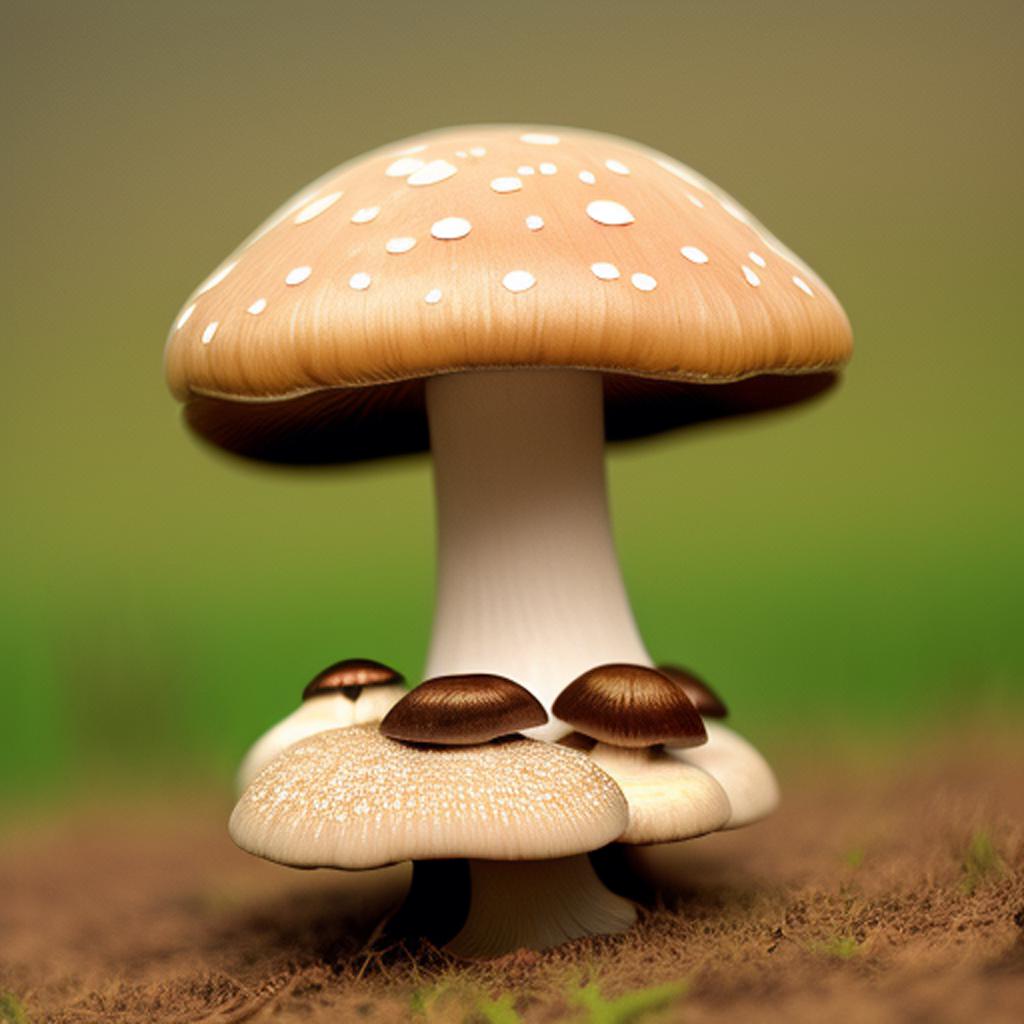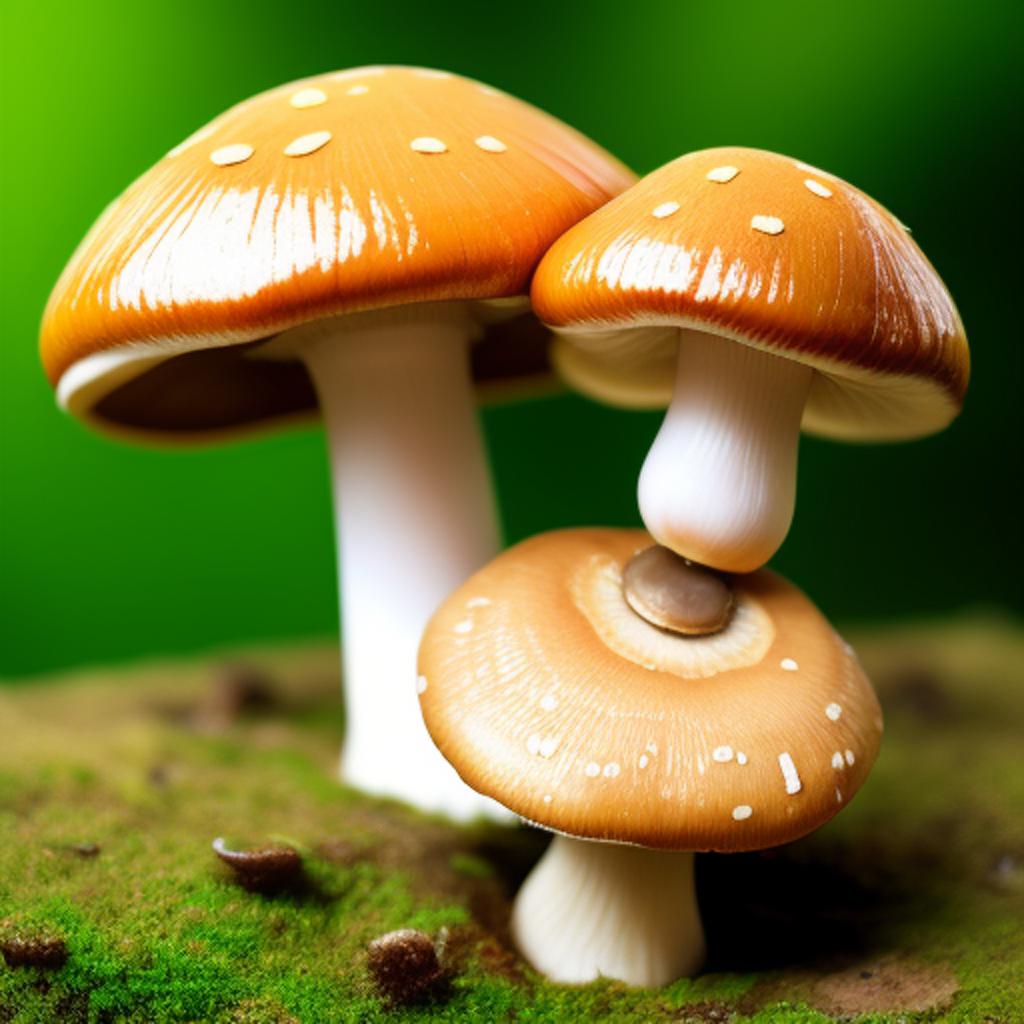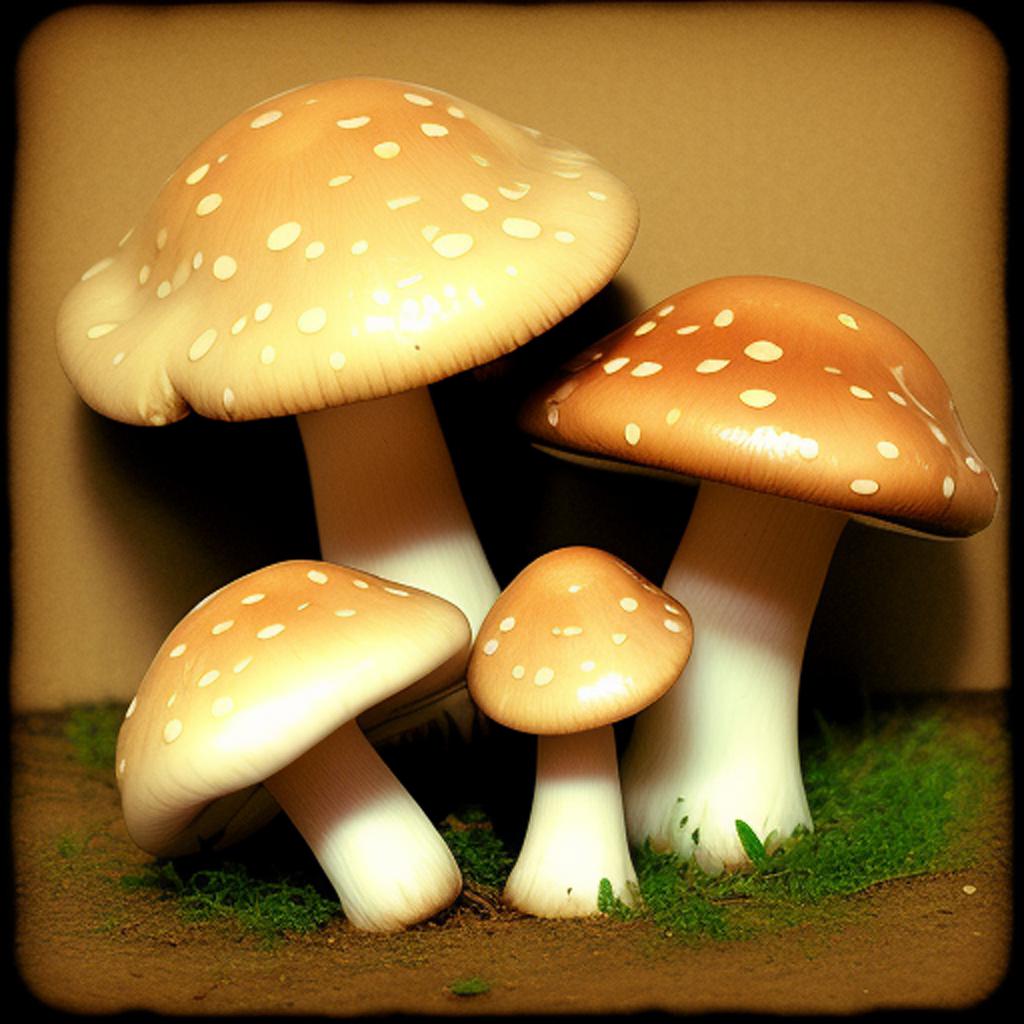Have you ever wondered if mushrooms are considered producers in the ecological context? In this blog post, we will delve into the concept of a producer and explore the fascinating world of fungi. Specifically, we will discuss the photosynthetic abilities of mushrooms and whether they can be classified as producers. Join us on this scientific journey as we unravel the mysteries of nature’s incredible organisms.
What is a producer in the context of ecology?
In ecological terms, producers are organisms that have the ability to create their own food through photosynthesis. They convert sunlight into energy and organic compounds, which serve as a source of nourishment for other organisms within the ecosystem. While plants are commonly recognized as producers, certain types of fungi like mushrooms do not possess photosynthetic abilities and therefore cannot be classified as producers.
Producers in ecology are organisms that convert sunlight into energy, serving as a source of nourishment for other organisms within the ecosystem. While plants are commonly recognized as producers, certain types of fungi play an essential role in ecosystems by breaking down dead organic matter and recycling nutrients back into the environment.
However, it’s worth noting that fungi play an essential role in ecosystems as decomposers. They break down dead organic matter and recycle nutrients back into the environment. While they don’t produce their own food through photosynthesis like true producers, they contribute significantly to nutrient cycling and support the overall balance within an ecosystem by colonizing various habitats and providing resources for other animals.
Definition of a producer
Producers, such as autotrophic organisms, possess the unique ability to convert light energy into chemical energy through photosynthesis. By synthesizing organic compounds, they serve as the foundation of food chains and provide vital sustenance for other organisms within an ecosystem. While animals consume these producers for survival, decomposers play a crucial role in breaking down their remains and recycling nutrients back into the environment.
Importance of producers in ecosystems
- Maintaining ecological balance relies on producers.
- Producers capture solar energy and store it as biomass.
- Oxygen release during photosynthesis is crucial for supporting life on Earth.
Producers play a vital role in maintaining the delicate balance of ecosystems. By capturing solar energy and converting it into biomass, they provide the foundation for all other organisms to thrive. The oxygen released during photosynthesis not only allows animals to breathe but also sustains countless other life forms, including decomposers that break down dead organic matter. Without producers, ecosystems would struggle to function efficiently or support diverse communities of organisms.
Examples of typical producers
Plants, including trees, grasses, and algae, are primary examples of terrestrial producers. Through photosynthesis, they convert sunlight into energy that is essential for the functioning of ecosystems. Phytoplankton in aquatic environments such as oceans and lakes also play a crucial role as producers by harnessing sunlight to fuel their growth. These organisms serve as the foundation of food chains and provide nourishment for animals that consume them. Additionally, decomposers aid in recycling nutrients by breaking down organic matter left behind by plants and animals once they have died or been consumed.
Understanding fungi and their photosynthetic abilities

Fungi, such as mushrooms, are not considered producers in the traditional sense. Unlike plants, they do not possess chlorophyll and cannot carry out photosynthesis to produce their own food from sunlight. Instead, fungi obtain nutrients by decomposing organic matter or forming mutualistic relationships with other organisms. However, some fungi have developed unique photosynthetic abilities through a process called endosymbiosis, where they form a symbiotic relationship with algae or cyanobacteria to acquire energy from sunlight. These photosynthetic fungi are fascinating examples of nature’s adaptability and the diverse strategies organisms employ for survival and growth.
The types of fungi that exhibit photosynthetic abilities vary greatly. Some common examples include lichens, which consist of a fungus and an alga living together in a mutually beneficial partnership; and endophytic fungi that inhabit plant tissues and contribute to their host’s nutrient uptake through photosynthesis. Additionally, there are specific species within the fungal kingdom known as “phototrophic” fungi that can directly convert light into chemical energy without relying on another organism’s assistance.
Understanding these intricate relationships between fungi and their ability to harness light energy sheds new light on the complexity of ecosystems worldwide. By unraveling how various types of fungi utilize different strategies for obtaining nutrients including those involving photosynthesis—we deepen our understanding of ecological interactions while marveling at nature’s ingenuity in adapting to diverse environments across the globe.
Characteristics of fungi
Heterotrophic nature of fungi allows them to obtain nutrients from organic matter in their environment, making them dependent on external food sources. The cell wall composition in fungi differs from that of plants, as it primarily consists of chitin instead of cellulose. Reproduction methods in fungi vary, with common methods including spore formation and sexual reproduction through the fusion of specialized cells.
Difference between plants and fungi in terms of photosynthesis
Absence of chlorophyll sets most fungal species apart from plants, making them unable to directly carry out photosynthesis. Unlike plants, fungi depend on external organic matter as an energy source for their survival and growth. In this regard, the mycelium plays a vital role in nutrient absorption and distribution within the fungal network.
Types of fungi and their photosynthetic abilities
Lichen-forming fungi forge symbiotic relationships with algae or cyanobacteria, benefiting from their photosynthetic abilities. This mutualistic partnership enables the fungi to obtain nutrients and energy through the products of photosynthesis, while providing a sheltered environment for their photosynthetic partners.
True photosynthetic mushrooms showcase unique capabilities by harnessing sunlight to produce energy. Through specialized structures called basidiocarps, these mushrooms perform photosynthesis independently without the need for an external partner. They possess chlorophyll-containing cells that convert light into usable energy, allowing them to thrive in diverse environments.
Parasitic or saprophytic mushrooms rely on decaying organic matter as their source of nutrition. Instead of engaging in direct photosynthesis like lichen-forming fungi or true photosynthetic mushrooms, these species break down dead plant material and derive nutrients from it. Their role in decomposing organic matter contributes to ecosystem nutrient cycling and renewal processes.
Photosynthetic abilities of mushrooms

Mushrooms, despite their appearance, do not possess photosynthetic abilities. Unlike plants and certain other organisms that can convert sunlight into energy through photosynthesis, mushrooms rely on external organic matter for nutrition. This characteristic sets them apart from producers in ecosystems.
However, mushrooms play a crucial role in nutrient cycling within ecosystems. As decomposers, they break down dead plant material and animal waste, releasing nutrients back into the soil. This process is essential for maintaining soil fertility and supporting the growth of other organisms.
Furthermore, mushrooms often form symbiotic relationships with photosynthetic organisms such as algae or cyanobacteria. These associations allow them to access additional nutrients produced by their partners through photosynthesis. It highlights the interconnectedness of different species in ecological systems.
In conclusion, while mushrooms are not considered producers due to their lack of photosynthetic ability, they contribute significantly to ecosystem functioning as decomposers and through mutualistic relationships with photosynthetic organisms. Understanding these aspects enhances our appreciation for the vital role fungi play in nature’s intricate web of life.
Lack of photosynthetic ability in mushrooms
Fungi, including mushrooms, have a unique mode of obtaining energy. Unlike plants, they lack the ability to perform photosynthesis and therefore cannot produce their own food using sunlight. This absence of chlorophyll in mushrooms is a key factor contributing to their non-photosynthetic nature.
So how do mushrooms acquire nutrients without photosynthesis? Mushrooms are heterotrophs that rely on organic matter for sustenance. They obtain nutrients by decomposing dead plant or animal material through a process called saprotrophic nutrition. This enables them to break down complex organic compounds into simpler forms that can be absorbed and utilized for growth and metabolism.
Overall, while mushrooms play an important nutritional role in ecosystems, they do not possess the capacity for photosynthesis like producers such as plants. Their dependence on external sources of organic matter highlights their unique ecological function as decomposers rather than primary producers in the food chain.
Nutritional role of mushrooms in ecosystems
Mushrooms play a crucial role in nutrient cycling and ecosystem health. As decomposers, fungi have an ecological importance in breaking down organic matter and releasing essential nutrients back into the soil. This process not only aids in recycling nutrients but also contributes to the overall balance of ecosystems. Additionally, mushrooms form mutualistic relationships with plants, where they exchange nutrients for carbohydrates through mycorrhizal associations. This symbiotic partnership enhances plant growth and allows for efficient nutrient uptake.
- Fungi as decomposers.
- Nutrient cycling facilitated by mushrooms.
- Mutualistic relationships between fungi and plants.
Association of mushrooms with photosynthetic organisms
- Symbiotic partnerships: Mycorrhizal associations between mushrooms and trees facilitate nutrient exchange, benefiting both parties.
- Lichens: A fascinating example of fungal-algal collaboration where fungi provide a protective environment for photosynthetic algae or cyanobacteria, allowing them to thrive in diverse habitats.
- The interdependence between fungi and cyanobacteria showcases the ability of certain mushrooms to form associations with these photosynthetic bacteria, obtaining nutrients through their metabolic activities.
These examples highlight the intricate relationships that exist between mushrooms and photosynthetic organisms, demonstrating the importance of these collaborations for ecosystem dynamics.
What kind of energy does a mushroom produce?

Mushrooms do not produce energy in the traditional sense, as they are not capable of photosynthesis like plants. Instead, mushrooms are fungi that obtain their energy by breaking down organic matter through a process called decomposition.
When organic material, such as dead plants or animal remains, begins to decompose, mushrooms play a vital role in this process. They secrete enzymes that break down complex organic compounds into simpler forms, which the mushroom then absorbs as nutrients. This decomposition process helps to recycle nutrients back into the ecosystem, making them available for other organisms to use.
It is important to note that while mushrooms themselves do not directly produce energy, they do serve as an essential part of the energy cycle within ecosystems. By aiding in decomposition, mushrooms contribute to the overall energy flow by recycling nutrients and facilitating the growth of other organisms.
Are mushrooms autotrophs?
Mushrooms, with their unique appearance and diverse range of species, have long been a subject of curiosity for nature enthusiasts and scientists alike. One of the fundamental questions that arises when studying mushrooms is whether they are autotrophs or heterotrophs.
Understanding Autotrophs and Heterotrophs:
Before we dive into the classification of mushrooms, it is crucial to understand the distinction between autotrophs and heterotrophs. Autotrophs are organisms capable of producing their own food through photosynthesis or chemosynthesis, utilizing energy from sunlight or inorganic compounds. On the other hand, heterotrophs rely on consuming organic matter to obtain their energy and nutrients.
Classification of Mushrooms:
Mushrooms belong to the fungal kingdom, which is distinct from both the plant and animal kingdoms. Fungi exhibit a wide range of characteristics, making their classification a complex task. While some fungi possess autotrophic traits, the majority are classified as heterotrophs due to their reliance on organic matter for sustenance.
Heterotrophic Mushrooms:
Most mushrooms are considered heterotrophs. They obtain nutrients by decomposing dead organic matter, such as fallen trees, decaying plants, or animal remains. Mushrooms have a specialized structure called mycelium, which consists of thread-like structures called hyphae. The mycelium grows underground or within its food source, releasing enzymes to break down complex organic compounds into simpler forms that can be absorbed as nutrients. This process of decomposition plays a crucial role in the ecosystem by recycling nutrients and making them available for other organisms.
Autotrophic Mushrooms:
While the majority of mushrooms are heterotrophs, there are some exceptions. A few species of mushrooms have been found to possess autotrophic traits. These mushrooms can produce their own food through photosynthesis, similar to plants. However, autotrophic mushrooms are relatively rare and make up only a small percentage of the overall mushroom population.
Conclusion:
In conclusion, the classification of mushrooms as autotrophs or heterotrophs depends on their ability to produce their own food. Most mushrooms are considered heterotrophs since they obtain nutrients by decomposing organic matter. However, there are a few species of mushrooms that have evolved the ability to photosynthesize and produce their own food, making them autotrophs. By understanding the classification of mushrooms, we gain valuable insights into their role in ecosystems and their contribution to the overall energy flow.
Does a mushroom produce its own energy?
A common misconception about mushrooms is that they produce their own energy through photosynthesis, similar to plants. However, this is not the case. Mushrooms, being fungi, have a different way of obtaining energy.
Unlike plants, which possess chlorophyll and use sunlight to convert carbon dioxide and water into glucose through the process of photosynthesis, mushrooms do not have the necessary structures for this metabolic pathway. Instead, they rely on organic matter for their energy needs.
Mushrooms are saprophytes, which means they obtain nutrients by breaking down dead organic material. They play a crucial role in the ecosystem by decomposing dead plants and animals, recycling nutrients back into the soil. This decomposition process is essential for maintaining the balance in forest ecosystems.
Mushrooms have a unique relationship with plants called mycorrhizal symbiosis. In this mutualistic relationship, the mushroom’s mycelium, a network of fine threads, forms a symbiotic association with the roots of plants. The mycelium helps the plant absorb nutrients from the soil, such as nitrogen and phosphorus, in exchange for receiving sugars produced by the plant through photosynthesis.
Essentially, mushrooms rely on the energy stored in organic matter, released during the decomposition process, for their growth and development. They do not generate their own energy but instead facilitate the recycling of nutrients in the environment.
In conclusion, mushrooms do not produce their own energy through photosynthesis like plants. Instead, they obtain their energy from decomposing organic matter and facilitate the recycling of nutrients in ecosystems. This unique role makes mushrooms essential for maintaining the balance in forest ecosystems. Understanding the classification of mushrooms and their energy sources can provide valuable insights into their ecological importance and their contribution to the overall energy flow.
Conclusion
In conclusion, mushrooms play a crucial role in the ecosystem as decomposers and nutrient recyclers. They break down organic matter, releasing essential nutrients back into the soil for other organisms to utilize. Understanding the photosynthetic abilities of fungi is important because it sheds light on their energy acquisition strategies and their impact on carbon cycling in terrestrial ecosystems. Further research in this field can potentially unravel new insights into fungal physiology and contribute to our understanding of how these organisms function within complex ecological networks. The implications of such knowledge may extend beyond basic scientific curiosity, offering potential applications in agriculture, biotechnology, and environmental conservation efforts.
